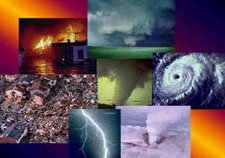The Business of Homeland Security
Published 17 October 2009
Graham Allison assesses the likelihood of a terrorist nuclear attack on the United States -- and offers the "Doctrine of Three No's" to prevent such an attack; the central points of this doctrine: "No unsecured nuclear weapons and weapons-usable material"; "no new national capabilities to enrich uranium or reprocess plutonium" and "no expansion of the nuclear club beyond its current 8.5 members"
How worried should we be about the possibility of terrorists getting their hands on a nuclear weapon and detonating it in the United States? Graham Allison, director of the Belfer Center for Science and International Affairs at Harvard University's Kennedy School of Government and a former assistant secretary of defense -- and author of Nuclear Terrorism: The Ultimate Preventable Catastrophe -- offers an assessment of the threat and suggestions what to do about it. He writes that to assess the threat of nuclear terrorism, it is necessary to answer five questions. Here are the questions he poses and the answers he gives:
- Who could be planning a nuclear terrorist attack?
Al-Qaeda remains a formidable enemy with clear nuclear ambitions. Former CIA director George Tenet wrote in his memoirs that al-Qaeda's leadership has remained "singularly focused on acquiring weapons of mass destruction," and willing to "pay whatever it would cost to get their hands on fissile material."
The chairman of the Joint Chiefs of Staff, Admiral Michael Mullen, recently said, "What I've worried about for some time is terrorists who get their hands on nuclear devices ... and at the very high end, al-Qaeda still both seeks that capability and sees us as the enemy."
- What nuclear weapons could terrorists use?
They could acquire an existing bomb from one of the nuclear weapons states or construct an elementary nuclear device from highly enriched uranium made by a state. Theft of a warhead or material would not be easy, but attempted thefts in Russia and elsewhere are not uncommon. Once a terrorist group acquires about 100 pounds of highly enriched uranium, terrorists conceivably could build a bomb such as the one dropped on Hiroshima.
- Where could terrorists acquire a nuclear bomb?
Russia is the most likely source of materials used for a nuclear attack. North Korea is a close second. Kim Jong Il's regime already has displayed recklessness in risk-taking by selling to Syria a plutonium-producing nuclear reactor a thousand times larger than a nuclear weapon. Further, research reactors in forty developing and transitional countries still hold the essential ingredient for nuclear bombs.
- When could terrorists launch the first nuclear attack?
If terrorists bought or stole a nuclear weapon in good working condition, they could explode it today. If the weapon had a lock, detonation would be delayed for several days. If terrorists acquired 100 pounds of HEU, they could have a working elementary nuclear bomb in less than a year.
- How could terrorists deliver a nuclear weapon to its target?
The nuclear weapon that terrorists would use in the first attack on the United States could arrive in a cargo container or along one of the paths used daily to bring illegal drugs across our borders. The sober judgment of the Commission on the Prevention of WMD Proliferation and Terrorism is that the threat is "growing, not shrinking."
As former senator Sam Nunn testified to that commission, the threat of a nuclear terrorist attack today is greater than it was eight years ago. To see what such an event would mean in your neighborhood, enter your ZIP code at http://www.nuclearterror.org/.
Allison writes that the good news is that this ultimate catastrophe is preventable. He offers this strategy for prevention, a strategy that could be called a "Doctrine of Three No's":
- No unsecured nuclear weapons and weapons-usable material; secure all nuclear weapons and materials to a "gold standard" within the next four years.
- No new national capabilities to enrich uranium or reprocess plutonium.
- No expansion of the nuclear club beyond its current 8.5 members (the eight members are the United States, Russia, China, France, England, Israel, India, and Pakistan; the half-member is North Korea, which is the only self-declared but unrecognized nuclear state).
We note that two of the three points relate directly to Iran: "No new national capabilities to enrich uranium or reprocess plutonium" and "No expansion of the nuclear club beyond its current 8.5 members."
"Faced with the possibility of an American Hiroshima, many Americans are paralyzed by a combination of denial and fatalism," Allison concludes. "But citizens must press their elected officials to adopt a clear agenda for action and then hold them accountable for following through."


No comments:
Post a Comment